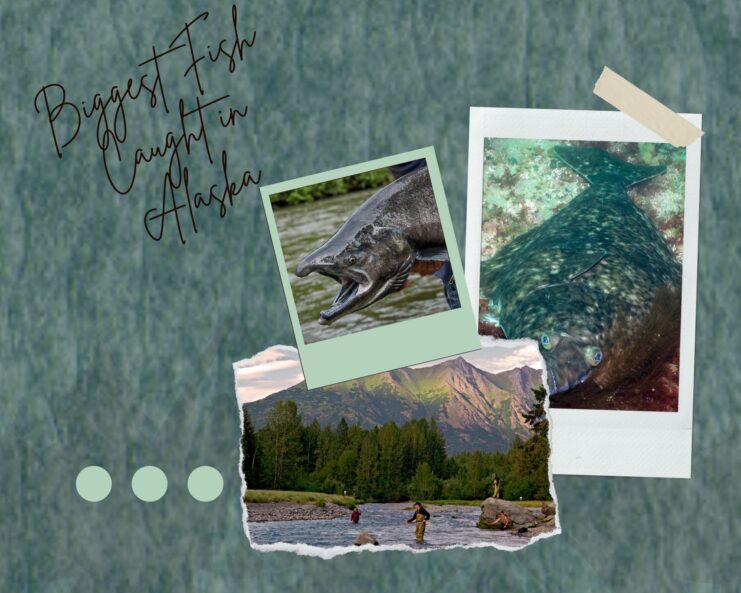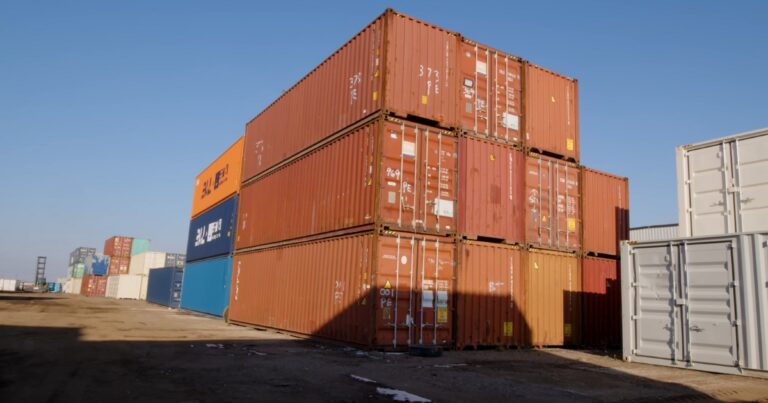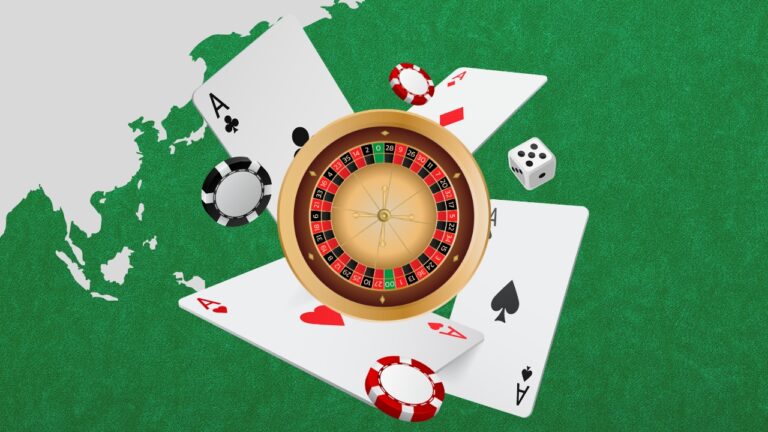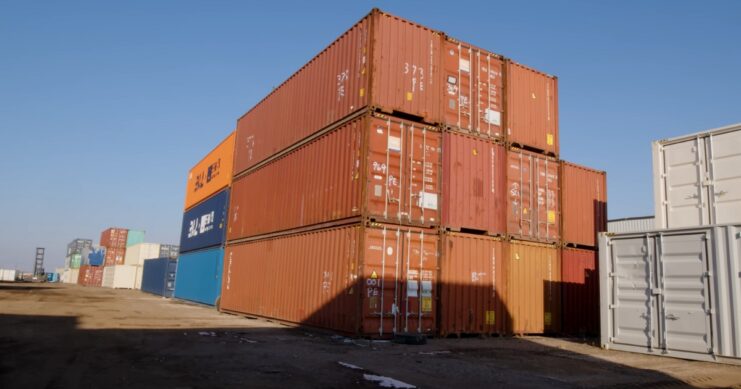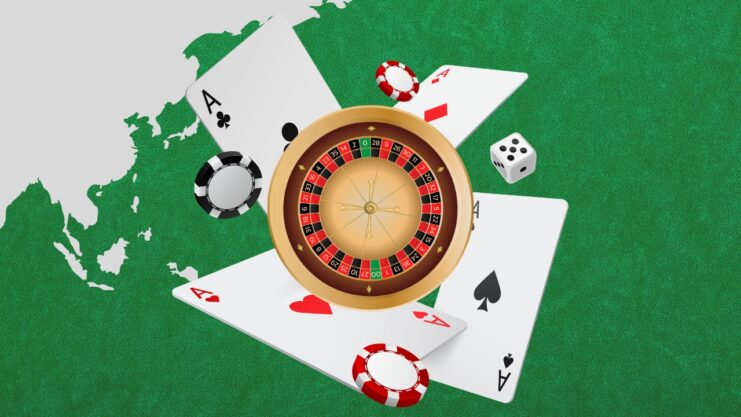Welcome to the wild and wonderful world of Alaska’s aquatic giants! If you’ve ever wondered about the titanic creatures that lurk beneath the icy Alaskan waters, you’re in for a treat. Today, we’re setting sail on an epic adventure to explore the biggest fish in Alaska; King Salmon, and the Pacific Halibut. So, strap on your life vests, and let’s dive into the deep!
1. The King of the River
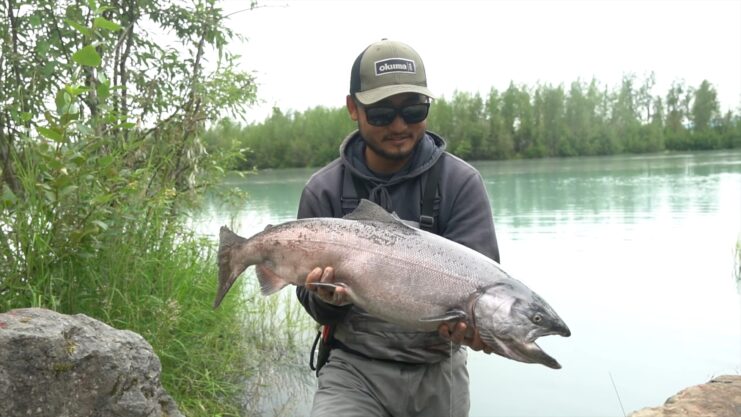
Commonly known as the “King Salmon,” or scientifically as the Chinook, this fish is the heavyweight champion of the salmon family. The record for the largest King Salmon was set by Les Anderson in 1985 on the Kenai River, with a catch that weighed an astonishing 97 pounds 4 ounces and measured almost 5 feet long!
The King Salmon is not just the largest salmon species, but it’s also the state fish of Alaska. These fish are anadromous, meaning they hatch in freshwater, migrate to the ocean to grow, and then return to freshwater to spawn. This life cycle can take anywhere from one to seven years, with most King Salmon returning to spawn after four years.
Its size is a testament to the rich feeding grounds of the North Pacific, where they spend most of their lives. However, their size and life cycle make them particularly vulnerable to changes in the environment. Climate change, habitat degradation, and overfishing have all contributed to declines in King Salmon populations in recent years.
2. The Flatfish Behemoth
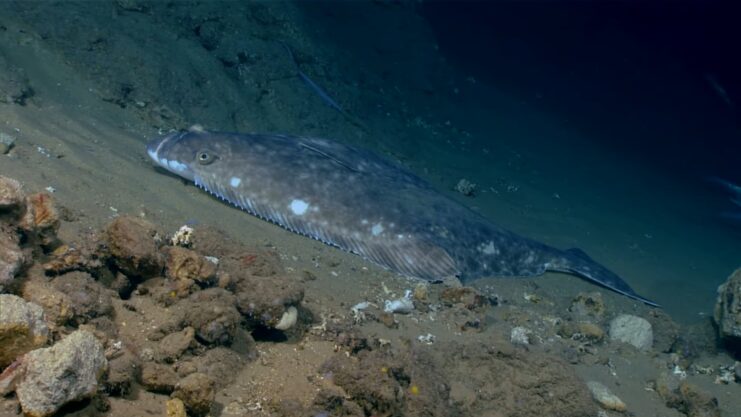
The Pacific Halibut is a fascinating creature. Unlike most fish, halibut are flat and have both eyes on the same side of their head. This unique adaptation allows them to blend into the ocean floor, where they lie in wait for unsuspecting prey.
Halibut can live for over 50 years, and its size increases with age. Female halibut grow faster and live longer than males, which is why the largest halibut are almost always females.
Like the King Salmon, the Pacific Halibut is also facing challenges due to climate change. Warmer ocean temperatures can affect their growth and reproduction, and changes in ocean currents can impact their food supply.
Other Record-Breaking Catches in Alaska
Alaska’s waters are teeming with other large fish species. Here are some of the state records:
| Fish Species | Weight | Location | Angler | Year |
|---|---|---|---|---|
| Arctic Grayling | 5 lbs. 1 oz. | Fish River | Peter Cockwill | 2008 |
| Lake Trout | 47 lbs. | Clarence Lake | Daniel Thorsness | 1970 |
| Northern Pike | 38 lbs. 8 oz. | Innoko River | Jack Wagner | 1991 |
| Steelhead Trout | 42 lbs. 3 oz. | Bell Island | David White | 1970 |
| Red Salmon | 16 lbs. | Unknown | Chuck Leach | 1974 |
While Alaska boasts some of the most impressive catches, other states have their own records worth noting. Check out this interesting find from Connecticut.
The Best Spots To Catch These Giants
If you’re looking to catch these aquatic titans, here are some of the best fishing spots in Alaska:
- Kenai River – Known as the best Chinook fishing spot in the world, the Kenai River offers excellent fishing from late May through August.
- Seward – Large 40+ lb Chinooks can be found right outside Seward Harbor, best targeted in March and June.
- Homer – The best place to catch saltwater Chinook, biting year-round.
Tips for Catching the Biggest Fish in Alaska
- Hire a Guide: Chartering a fishing trip in Alaska can help ensure you have the necessary gear and an experienced guide.
- Check Local Regulations: Local fishing regulations should be checked before heading out to ensure you’re fishing legally.
- Patience is Key: Remember, fishing is a waiting game. The biggest catches often come to those who wait.
Fishing Regulations in Alaska
Alaska has strict fishing regulations to ensure the sustainability of its fish populations. These regulations include bag limits, size limits, and specific fishing seasons. For example, the fishing season for King Salmon in the Kenai River usually runs from July 1 to July 31, and anglers are limited to one King Salmon per day.
Before you head out on your fishing adventure, be sure to check the current regulations on the Alaska Department of Fish and Game website. Remember, these regulations are in place to protect the state’s valuable fish resources for future generations.
The Importance of Sustainable Fishing Practices
Sustainable fishing is more than just a buzzword; it’s a commitment to preserving our aquatic ecosystems and Alaska’s fish populations for generations to come. It’s about understanding that every fish caught has a ripple effect on the delicate balance of marine life. But what does it mean to fish sustainably, and how can we, as individual anglers, contribute to this cause?
Sustainable fishing practices are those that minimize environmental impact, preserve fish populations for the future, and maintain the health of aquatic ecosystems.
These practices are guided by scientific research and are designed to prevent overfishing, reduce bycatch (the unintentional capture of non-target species), and protect marine habitats. This includes following all fishing regulations, practicing catch and release, and using gear that minimizes harm to fish.
Conclusion
Our journey into the world of Alaska’s biggest fish is more than just a tale of size and records. It’s a testament to the incredible diversity and resilience of life in these waters. It’s a reminder of the importance of sustainable fishing practices and the role we all play in preserving these aquatic wonders.
So, the next time you cast your line into the water, remember the giants that swim beneath the surface. Here’s to the thrill of the catch, the beauty of nature, and the ongoing story of the biggest fish in Alaska. Happy fishing!

